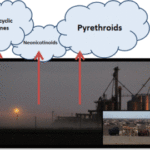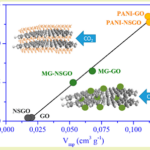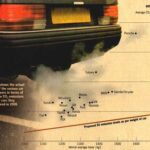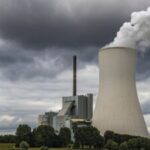January 5, 2025 Global Warming
Neither electric vehicles nor so-called alternative power sources are environmentally friendly.
They are also neither reliable nor convenient.
Electric vehicles, wind and solar power are not reliable, affordable and environmentally friendly
Several governments have pledged to promote the purchase of electric cars and so-called alternative energy production systems.
The stated goals are indeed ambitious: to reduce pollution, improve health, protect the environment, and provide “reliable” electricity at lower cost.
Among the early adopters are the governments of the United States, Canada, Australia, New Zealand, the European Union, and the Vatican.
But will the introduction of these new technologies really make it possible to achieve these ambitious goals ?
To get a comprehensive answer, it is necessary to examine everything that is required for the operation of these new technologies, their decommissioning, and the design and construction of the supporting infrastructure.
To begin with, batteries for electric vehicles require lithium, the extraction of which requires 2 tons of water for every kilogram (kg) of metal extracted.
Each battery requires approximately 10 kg of lithium, which means that 20 metric tons of water are required for each battery.
In addition, lithium is typically found in deserts where water is scarce.
Electric vehicle batteries also require cobalt, of which the Democratic Republic of Congo is the world’s largest producer.
Unfortunately, the expansion of cobalt mines in the country has already turned many green areas into barren land.
Kasulo, once a working-class neighborhood of the city, has become uninhabitable since the exploitation of underground minerals began in 2014.
In addition, both electric vehicles and wind and solar power plants require the use of rare earths, the extraction of which causes deforestation, soil erosion, water contamination, loss of wildlife habitat, landscape alteration, and air pollution.
There are also adverse health effects on miners, including lead poisoning.
Building the infrastructure needed for “alternative” energy systems (hydro, solar, wind, and geothermal) requires four times more materials (such as steel, glass, copper, cement, aluminum, iron, lead, plastics, and silicon) than conventional energy systems (coal, natural gas, and nuclear).
In addition, solar and wind require about 33 and 179 times more land, respectively, than coal-fired power plants.
The high cost of materials and land exponentially increases the cost of the energy produced.
It should also be remembered that solar power plants and wind turbines pose a threat to a large number of birds, especially bats, during their operation.
This is not to mention the enormous reliability problems that have arisen in many places around the world.
For example, it is well known that in California, almost all of the electricity produced comes from alternative energy generation systems.
All coal-fired power plants have been retired, as have almost all nuclear power plants (only one is still in operation), and gas-fired power generation has been minimized.
However, several blackouts occurred in the summer of 2020 due to the high demand for electricity from the population’s heavy use of air conditioning.
Similarly, Texas has invested heavily in wind and solar power.
However, in February 2021, a sudden drop in temperature from a particularly severe snowstorm froze wind turbines and covered solar panels with snow, leaving much of Texas without power for several days.
This resulted in more than 200 deaths and billions of dollars in economic losses.
The following July, natural gas-fired power plants came back online to make up for the loss of wind and solar power, this time due to an unusual summer heat wave.
In the winter of 2020-21, Germany experienced something similar to Texas when thousands of people in some Berlin neighborhoods were left without heat and hot water due to outdoor temperatures of about 3°C.
It should also be noted that since the country began switching to an increased use of alternative energy sources (starting around the year 2000), Germany has experienced more frequent power outages and the price of electricity has more than tripled.
Simply put, wind and solar power plants are neither cheap, reliable, nor environmentally friendly.
Electric vehicles, on the other hand, are dangerous, unreliable, and very expensive.
Because lithium-ion batteries store a large amount of electrical energy, electric vehicles are also known to have a high risk of fire.
Compared to internal combustion engines, electric vehicle power systems produce fires that are more difficult to extinguish because the batteries can restart suddenly, making them difficult to cool.
In addition, electric vehicle fires can release large amounts of toxic gases, such as hydrogen fluoride, into the environment.
It is well known that cold weather is the enemy of electric vehicles.
Temperatures below 0°C can significantly reduce their range, to the point of rendering them useless due to the increased internal resistance of lithium-ion batteries at low temperatures.
In addition, electric vehicle battery charging time can be significantly longer in extreme cold.
However, it is important to note that while electric vehicles emit zero CO₂, they do emit other types of emissions, including dangerous particulate matter (PM) from brake and tire wear.
Electric vehicles emit about the same amount of PM10 and only 1-3% less PM2.5 than internal combustion vehicles.
Finally, the disposal of electric vehicle batteries, wind turbines, and solar panels has very problematic environmental aspects.
Electric vehicle batteries have an average lifespan of 5-10 years, but they must be replaced when power generation falls below 80 percent of their original capacity.
Unfortunately, due to their high residual capacity, recycling these batteries is truly cost prohibitive and poses a high risk of air, water and land pollution.
Similarly, wind turbine blades have a lifespan of about 10 years, while solar panels have a lifespan of about 25 years.
Again, their disposal is very difficult because they contain toxic materials such as lead and cadmium that can easily seep into the ground.

Therefore, it is possible to say without a shadow of a doubt that both electric vehicles and so-called alternative sources of electricity are not environmentally friendly at all.
They are also neither reliable nor convenient.














